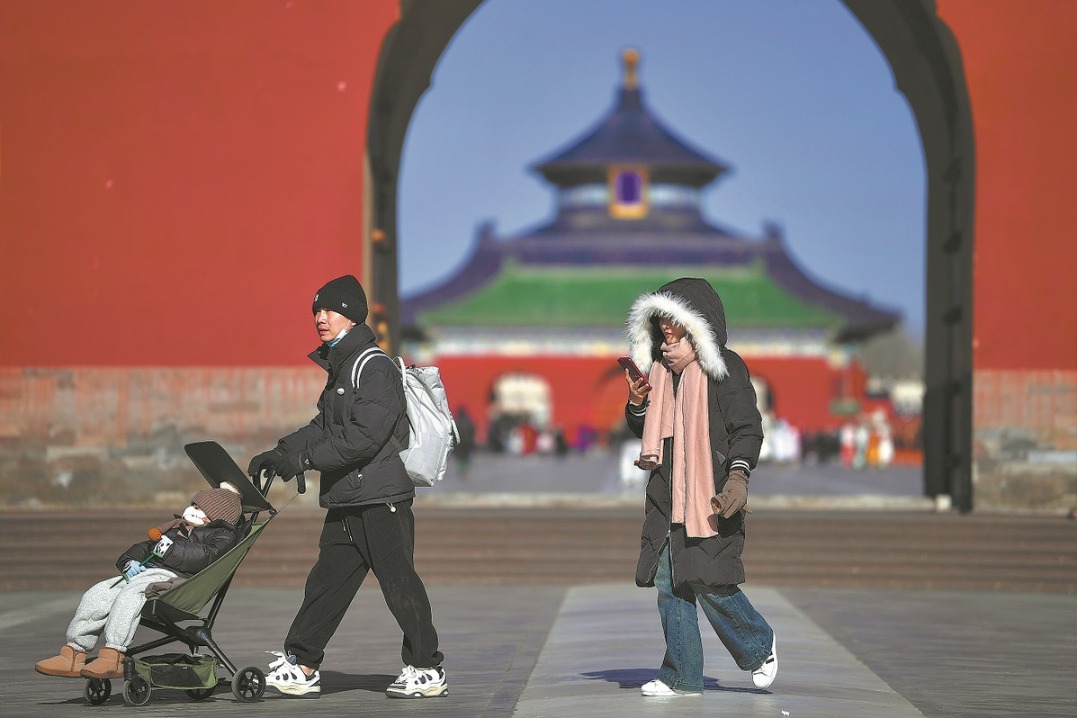America's racial demographics changing
By BELINDA ROBINSON in New York | China Daily Global | Updated: 2023-09-20 10:35
America's racial demographics are changing fast and becoming more diverse, as new figures show that Generation Z, those born between 1997 and 2012, will be the last with a white majority.
The number of non-Hispanic white people will fall below half the population by 2045, US Census Data predicts. The changes in the country's racial demographics are being driven by a growth in the Latino, Asian and mixed-race populations and low birth rates and aging among whites, say experts.
Professor Richard Alba is an American sociologist, distinguished professor emeritus at City University's Graduate Center, in New York and the sociology department at the State University of New York in Albany. He suggests the changes ahead generate widespread interest because of the country's history.
"America has seen itself for a very long time as fundamentally divided by race," Alba told China Daily. "Certainly 50 years ago, what that meant was we were divided between whites and blacks and the other groups didn't matter very much. But, partly because of immigration and partly because of lower fertility among native groups, especially whites, the racial composition of the country has really been changing."
Non-Hispanic white people made up 77 percent of the population among those age 75 and older, data from the 2020 census showed. They were 67 percent of those between age 55 and 64, and 55 percent of those between age 35 and 44. By 2050, there will be just 40 percent of people under 18.
In some parts of the country, the changes in long-standing racial demographics are already taking place. In Texas, Latinos have had the largest share of the state's population since at least July 2022, while non-Hispanic white Texans make up 39.8 percent of the population. Demographers see it as significant as the state had a white majority from 1850 to 2004.
"The shift in demographics is being driven largely by differences across groups in their age structure," Rogelio Saenz told China Daily. He is a sociologist and demographer in the Demography Department at the University of Texas at San Antonio and a senior fellow at the Carsey School of Public Policy at the University of New Hampshire.
Saenz added: "Due to socioeconomic advantages, Europeans and whites in the US went through the demographic transition first in which their death rates plummeted with babies surviving to eventually reach old age followed a while later by declining birth rates, a dynamic resulting in people living longer and fewer babies being born with the population becoming older."
Latinos collectively had a GDP of $2.8 trillion in 2020, compared with $2.1 trillion in 2015 and $1.7 trillion in 2010, according to the nonprofit research organization Urban Institute.
But the median wealth for Latinos is five times lower than their white counterparts, and less than half of Hispanic families own homes.
Saenz said: "Today, the Latino population in the US is growing primarily due to natural increases, like more births than deaths, compared to international immigration, while the Asian population growth has been due largely to immigration."
Asian Americans — led by the largest group, Chinese Americans — are the fastest growing ethnic group in the US, data shows. The growth of the community over the past 20 years has occurred in every single state in the country. The largest growth has been in California, Texas and New York.
Data from the Pew Research Center shows that the Asian American population is projected to reach 46 million by 2060. Chinese Americans will make up 24 percent of the entire Asian population, or 5.4 million people.
By 2055, Asian Americans are projected to become the nation's largest immigrant group, surpassing Hispanics.
"Asians are certainly increasing in size. And they will probably in several decades rival Latinos in size," Alba said.
Chinese Americans first immigrated to the US in the 1850s amid the California Gold Rush. When that ended, many worked on farms as domestic workers, and some famously helped build the Transcontinental Railroad.
By 1869, many found it difficult to secure reliable jobs after a depression caused economic hardship. By 1882, Congress passed the Chinese Exclusion Act, which restricted immigration into the US.
In 1943, China fought alongside the US in World War II, and Congress repealed the Exclusion Act. Immigration was still limited to just over 105 people a year. Following the Immigration and Nationality Act of 1965, restrictions were lifted, allowing more immigration to the US from China.
Today, around 6 in 10 Asian Americans, or 57 percent, including 71 percent of Asian American adults were born in another country, Pew found.
And, as of 2019, the group's median age was 34, slightly lower than the nation's overall median age of 38. Nearly 6 in 10 US-born Asians were members of Generation Z in 2019.
"Over the decades from the mid-1960s to 2010, immigration accounted for a significant segment of the population growth of Asians and Latinos," Saenz said.
"Since the Great Recession, the number of immigrants originating from Latin America and the Caribbean has gone down, driven by the plunge in immigration from Mexico, with the volume of immigration from Mexico today being less than half of what it was in 2007."
African Americans, who are mostly descendants of African slaves transported to the US from the 1600s, made up 12.1 percent of the nation in 2021. The majority, 58 percent, live in the South, while others live in northern cities, like New York.
In 2020, around 46.9 million people identified as black, or multiracial, up from 36.2 million in 2000.
Overall, the black population in the US has seen growth, but it is among those who identify as being black and foreign born. Among that group, almost 9 in 10 were born in either African or Caribbean countries. Around 46 percent were from Caribbean nations and 42 percent from African countries.
American Indian and Alaska native populations aren't projected to grow much larger. They are in Oklahoma, Alaska, portions of the Mountain West and the Upper Great Plains.
Alba, who wrote the 2020 book The Great Demographic Illusion: Majority, Minority, and the Expanding American Mainstream, also believes that it is important to acknowledge the rise of more mixed-race families and people in the US.
"One of the important things that's happened that's been surging in the 21st century in the United States is mixed-race families," he said.
"When you look at the birth data, for example, for the United States, it's very clear that it's rising. A lot of it involves a white parent and a parent who would be considered nonwhite. If a child is born to a white parent, there's a 1-in-5 chance that the other parent is not white."
The number of mixed people in the US is predicted to double between 2020 and 2050. Alba says that mixed-race people also have high rates of marriage to white people.
America's mixed white and black population used to be labeled as black, due to the controversial ‘'one drop rule'' dating back to the 1600s, which made anyone with black ancestry identify as that race.
Other peculiarities exist in how race has been defined through history. Those of Middle Eastern or North African descent were categorized as white by the Census, while people from Pakistan and Afghanistan have been labeled Asian. From 2000, respondents have been able to choose more than one race.
The expected diversification of America has spurred fear among some extremist groups. White nationalists marched through Charlottesville, Virginia, with tiki torches in 2017 during a "Unite the Right'' rally chanting, "You will not replace us."
Saenz said: "Segments of the white population are concerned that the position that they held as the majority of the nation is changing, some begrudgingly accept it, and others resist it."
Over the past few years, several extremist groups have raged against being "replaced" by other ethnicities.
One, dubbed "Active Clubs", trains white supremacist extremists in martial arts, neo-Nazi ideology and how to defend themselves against their perceived enemies. Experts have seen the number of such clubs rise in Arizona, California, Montana, Pennsylvania and Tennessee.
"Like other white supremacist groups, Active Clubs actively promote the Great Replacement theory, a conspiracy about the impending destruction of the white race that they also refer to as ‘white genocide'," Morgan Moon, an investigative researcher for the Anti-Defamation League's Center on Extremism and an expert on Active Clubs told China Daily.
Alba believes that it is important to note that any fears that the white race will be completely erased is "overblown".
He said that Census predictions on race are subject to change, and some data may even be misleading.
"The loss of the white majority is not a clear outcome," he said. But he added: "On the other hand, we're heading toward, I think, a very different society."
























